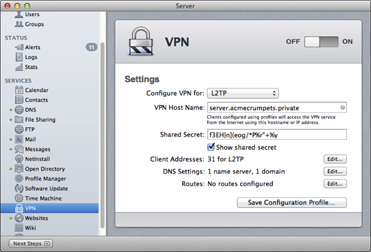Figure 18-8: The VPN pane in the Server app.
Using Virtual Private Networks
A virtual private network (VPN) is a secure encrypted connection to a local network from outside it, typically made over the Internet. Remote users connected through a VPN see the local network, including servers and printers, as though they’re connected directly to it. You can also connect two remote local networks through a virtual private network.
If you set up Mountain Lion Server as a private server (with a .private domain name), not serving to the Internet, users outside the building can privately connect to your hosted websites, wikis, and other services through a VPN.
In Mountain Lion Server, you create virtual private network connections with the Server app’s VPN pane, as shown in Figure 18-8.
Setting up VPN service is simple:
1. In the Server app, click the VPN icon.
2. If necessary, edit the settings in the VPN pane, as described in the following sections.
3. Click the big switch to the On position.
4. Click the Save Configuration Profile button.
The vpn.mobileconfig file is created. You can use this file to configure Mac and iOS clients. The information in the file is automatically added to Profile Manager (see Chapter 16), if it is running before you save the configuration profile.

The next few sections describe the VPN settings options.
VPN protocols: L2TP/IPSec and PPTP
The VPN pane’s ...
Get OS X Mountain Lion Server For Dummies now with the O’Reilly learning platform.
O’Reilly members experience books, live events, courses curated by job role, and more from O’Reilly and nearly 200 top publishers.

